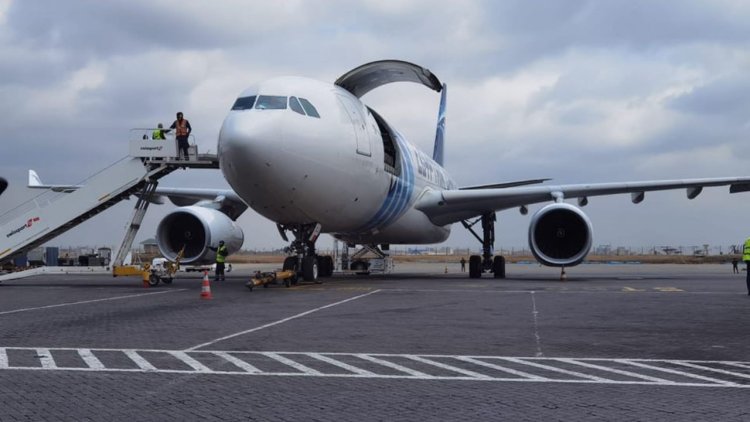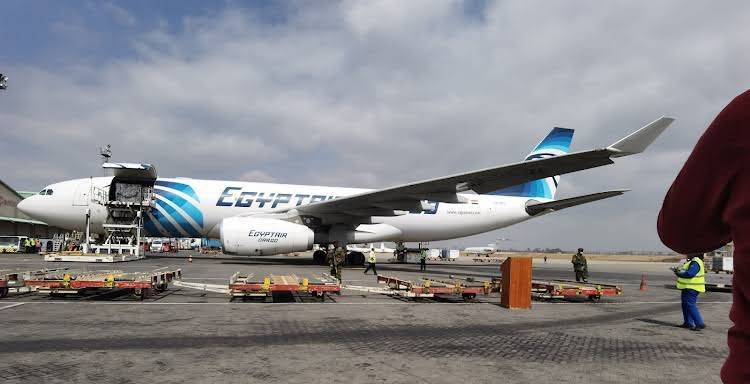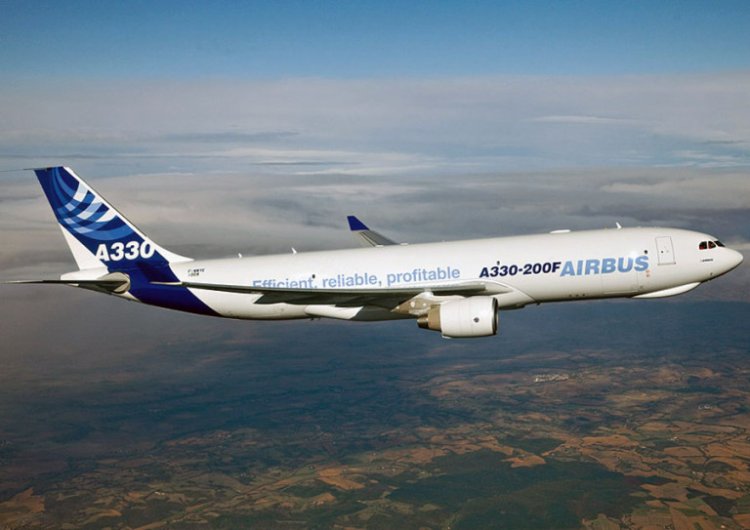What You Didn't Know About Plane Carrying IEBC Ballot Papers
The aircraft is owned by Egyptair, one of Africa's biggest commercial airlines.

On Wednesday, July 27, an aircraft carrying the much-awaited ballot papers for the Independent Electoral and Boundaries Commission (IEBC) touched down at the Jomo Kenyatta International Airport (JKIA) in Nairobi.
The aircraft is owned by Egyptair, one of Africa's biggest commercial airlines. It was carrying 225 pallets as well as a delegation that had toured the Inform Lykos (Hellas) SA company in Greece to oversee the printing of ballot papers.
“The process of printing the ballot papers is still ongoing in Athens, and the remaining pallets will be delivered in two phases. 300 pallets are set to arrive on July 29, and the final consignment of 345 pallets to arrive on August 3, days before Kenyans go to the polls,” revealed IEBC Vice Chair Juliana Cherera.

An Airbus A330 cargo flight belonging to Cairo Air was used to transport election material from Greece. /FILE
While in Greece, the IEBC team inspected security features on ballot papers and witnessed printing, packaging of ballot papers into booklets, boxes, palettes & labelling ready for shipment. They also cross-checked security features on statutory documents printed to accompany ballot papers to the polling station.
"The delegation was shown how Inform Lykos company destroys damaged ballot papers, a process they carry out daily using shredding machines," stated IEBC.
Viral Tea has established that the aircraft is an Airbus A330-200F based on Airbus' popular A330-200 passenger jetliner.
It is produced on the same Toulouse, France final assembly line as other A330 and A340 Family aircraft. This ensures a sustained output, providing production line slots to meet market demand.
Overall flexibility has been enhanced with the introduction of Airbus' versatile main-deck cargo loading system, which can accommodate all industry-standard containers and pallets, enabling operators to serve the freight lift needs of varying markets.
According to Airbus' official website, the aircraft can transport up to 23 side-by-side pallets on its main deck, with flexibility for additional arrangements such as single-row loading of 16 pallets, and a mix of nine AMA containers with four pallets. The spacious lower-deck cargo hold accepts up to 26 LD3 containers, plus 19.7 cubic metres of bulk cargo.
The modern cargo jetliner utilises a wide range of innovations that make it the most economical and ecological freighter in service today. Among these cost-reducing features are the aircraft's reinforced fuselage and doors, which increase shear and bending/running loads; its use of the latest in eco-efficient engine technologies for reduced carbon dioxide (CO2) emissions and noise levels; along with a “glass cockpit” and advanced navigation systems for enhanced flight operations.
The A330-200F flies 20 per cent further and has a cost per tonne that is 13 per cent lower than its direct competitor. It is capable of carrying 65-to-70 tonnes of payload, with a range that stretches from 3,200 nautical miles (nm) up to 4,000 nm.
The A330 was Airbus's first airliner to offer a choice of three engines: the General Electric CF6, Pratt & Whitney PW4000, or the Rolls-Royce Trent 700.
As a new-generation freighter derived from Airbus' proven A330 jetliner family, the A330-200F offers highly efficient operation with less noise and emissions than the ageing fleets of mid-sized cargo aircraft used in worldwide service today.
In addition to offering better payload, range and economics than previous-generation freighters in its class, the A330-200F also provides the full benefits of operational commonality with Airbus' fly-by-wire family of single-aisle and widebody jetliners.
It represents an ideal replacement for obsolete first-generation widebody freighters and also provides airlines with a highly efficient all-cargo solution to replace services of passenger and cargo “combi” aircraft.

An A330 cargo plane in flight. /AEROCONNECT.COM
Since its service entry in 2010, the world's most modern mid-size freighter – Airbus' A330-200F – has established itself by providing reliable, flexible and profitable operations to all continents.
Major cargo carriers around the world have turned to the A330-200F for long-haul and regional missions as the aircraft has attained a reliability rate of more than 99.6 per cent and in-service utilisation of up to 400 flight hours per month.
The A330 is the third-most-delivered wide-body aircraft in the world after its American rivals, Boeing's 777 and 747 versions. In September 2020, the A330 reached a milestone of 1,500 deliveries, Airbus's first twin-aisle aircraft to do so.






